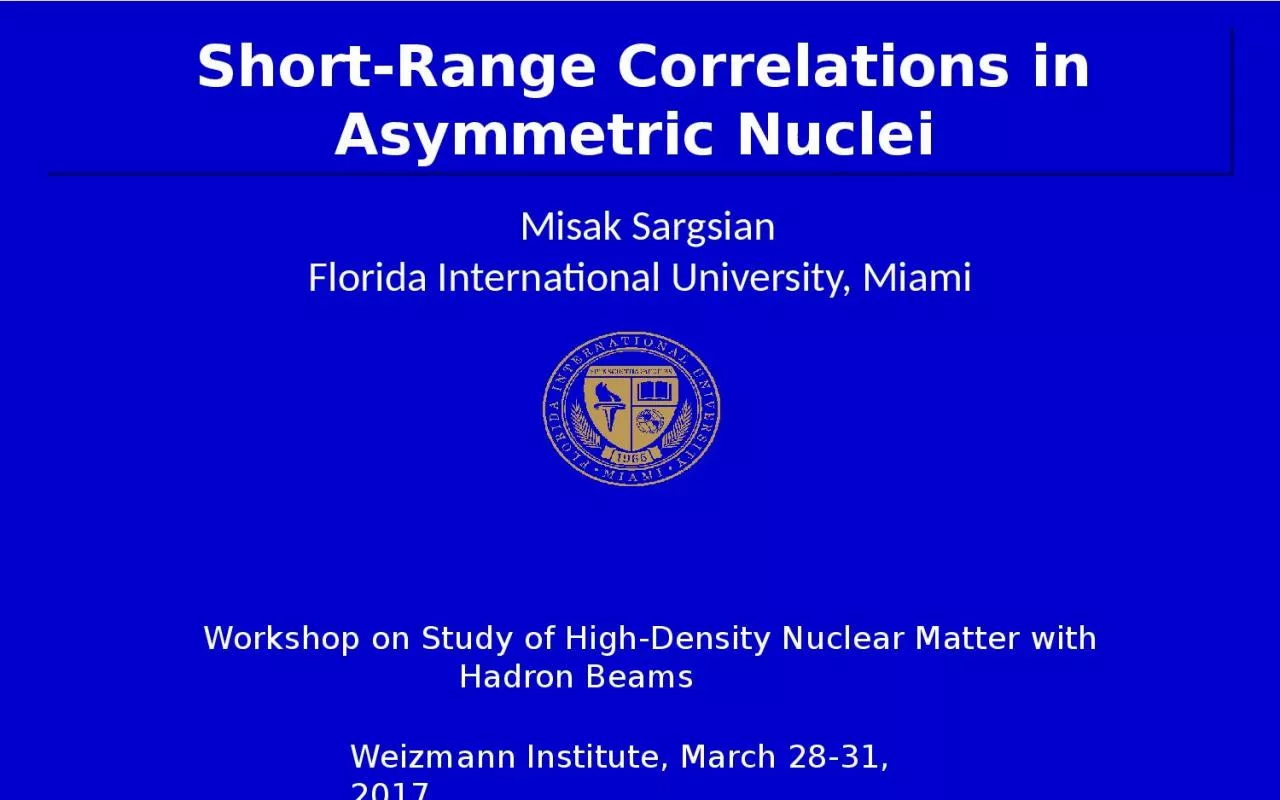PPT-Misak Sargsian
Author : isla | Published Date : 2023-09-22
Florida International University Miami ShortRange Correlations in Asymmetric Nuclei Weizmann Institute March 2831 2017 Workshop on Study of HighDensity Nuclear
Presentation Embed Code
Download Presentation
Download Presentation The PPT/PDF document "Misak Sargsian" is the property of its rightful owner. Permission is granted to download and print the materials on this website for personal, non-commercial use only, and to display it on your personal computer provided you do not modify the materials and that you retain all copyright notices contained in the materials. By downloading content from our website, you accept the terms of this agreement.
Misak Sargsian: Transcript
Download Rules Of Document
"Misak Sargsian"The content belongs to its owner. You may download and print it for personal use, without modification, and keep all copyright notices. By downloading, you agree to these terms.
Related Documents

